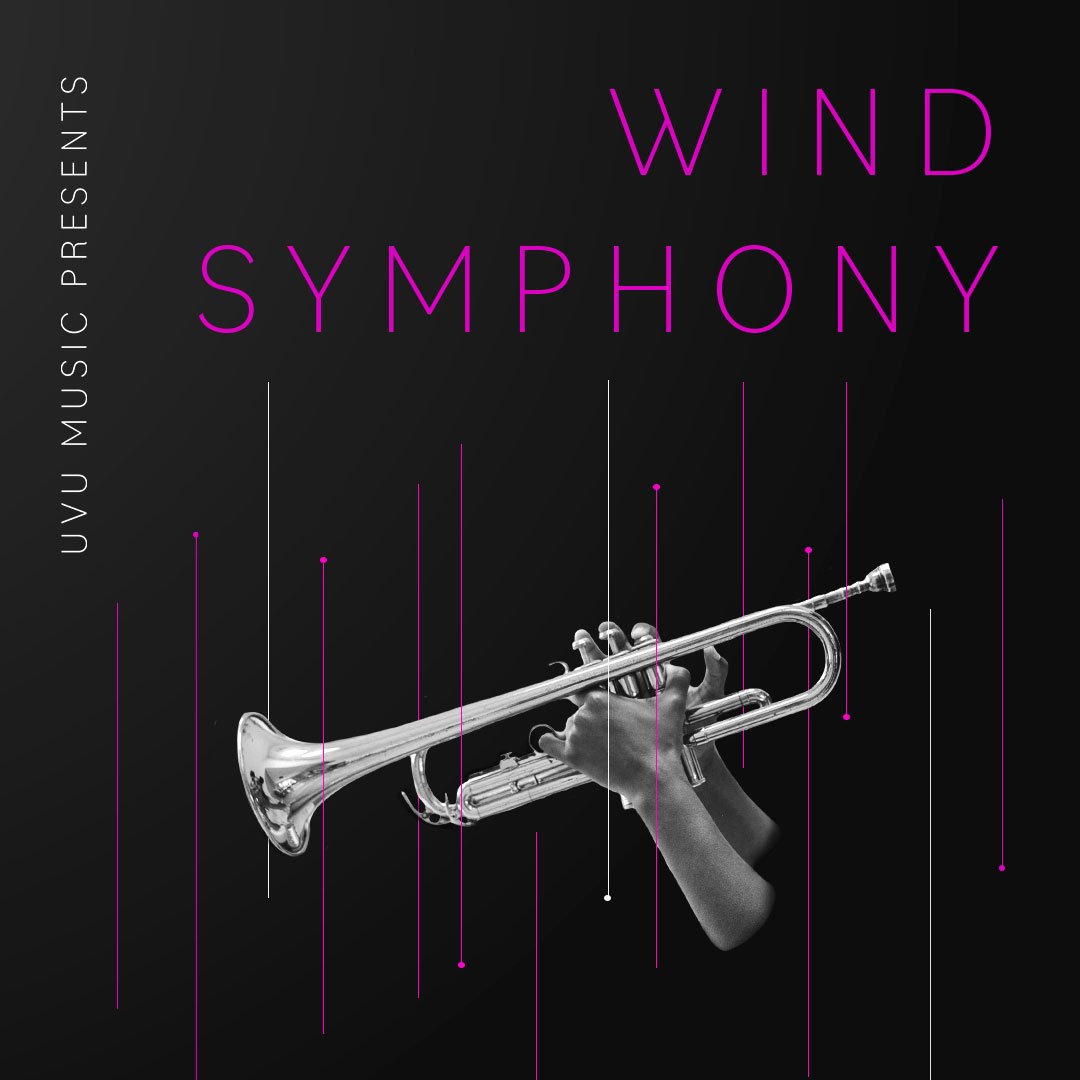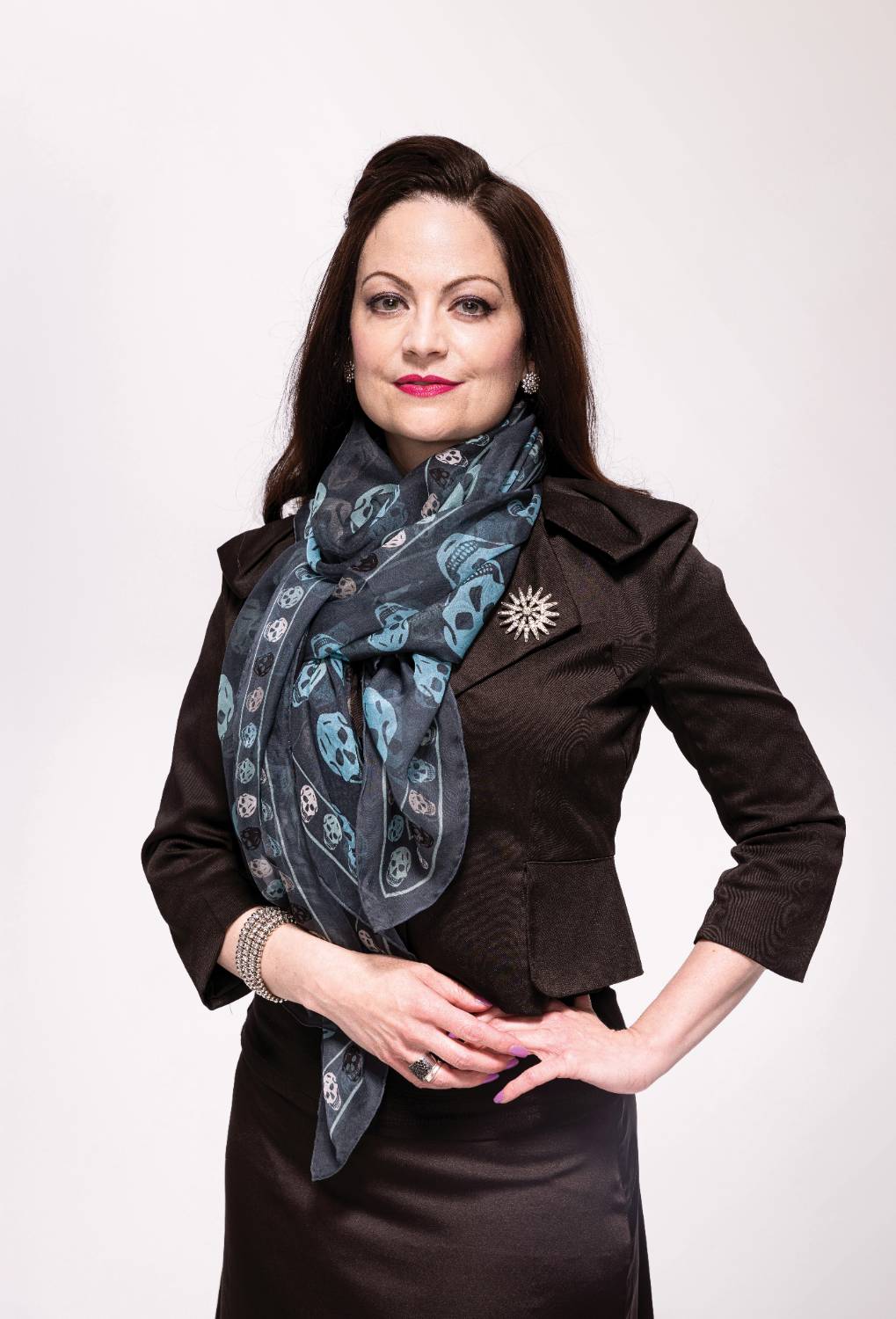
April 19, 2023 | 7:00 PM
Conductor
Johan Halvorsen (1864-1935)
tr. and ed. Marc Oliver
Guest Clarinet Soloists:
Luke Rasmussen, Cedar Valley High School
Tristan Carlson, Cedar Valley High School
Guest Pianist:
Rachel Johnson, Cedar Valley High School
TRANSLATION
Oh Fortuna (O Fortune, variable as the moon)
Fortune plango vulnera (I lament Fortune's blows)
Ecce Gratum (Behold the Spring)
Tanz - Uf dem anger (Dance - on the lawn)
Were diu werlt alle min. (Were the world all mine)
Amor volat undique (The God of Love flies everywhere)
In Taberna (When we are in the tavern)
Fortuna Imperatrix Mundi (Fortune, Empress of the World)
Conductor
Just Flyin'!
Ms. Giroux and Dr. Strauss [Andrea DeRenzis Strauss, conductor of Tara Winds] collaborated on the form and substance of this composition, written especially for the 69th Annual Midwest Clinic. Ms. Giroux writes, “The piece is fast with loads of woodwind runs, with particular attention to the Bb clarinet section, lots of dynamics, and an ending with madness over the top of a chorale setting. Enjoy the wild ride and pay attention to the clarinet section because their fingers will be just flyin’!”
- Program Note from Tara Winds concert program, 19 December 2015
Entry March of the Boyars
Halvorsen was living in Bergen, Norway, in 1895 when he was offered a teaching position in Bucharest, Romania. While searching in an encyclopedia for information about Romania, he became interested in the boyars (privileged aristocracy) and decided to write a march in their memory. Encouraged by Edvard Grieg, he wrote out all of the parts in one night and premiered the work the next day with his theater orchestra. Although flattered by the job offer, Halvorsen decided to remain in Bergen for a few more years.
From the 10th through the 17th centuries, the Boyars were the highest ranking members of the Bulgarian, Romanian, Russian, and Ukrainian aristocracy, second only to the ruling princes. Halvorsen's Entry March of the Boyars depicts the ceremonial entrance of these aristocrats in a theatrical setting. A solo clarinet introduces the regal theme, and more instruments are added to represent the approach of the entourage. This piece did not receive national recognition until Grieg, who was the uncle of Halvorsen's wife, created an arrangement for piano in 1898.
Freebirds
Freebirds takes its title and inspiration from the album by the iconic southern rock band, Lynyrd Skynyrd. Based on the song Free Bird, it is a driving, ecstatic showpiece for two clarinets and band. The work begins with a cadenza-like passage for the soloists, takes the listener through some high, beautiful lyrical passages and amazing extended techniques for clarinet leading to the ending in a virtuosic cadenza. This piece grabs hold of the listener and never lets go with rapid technical passages that emulate the dueling electric guitars of Lynyrd Skynyrd.
- Program Note by composer
Carmina Burana
Carl Orff's first stage work, Carmina Burana, was composed in 1935-6 and premiered at the Frankfurt Opera in 1937; it became an outstanding success. Orff drew the inspiration for his grand vocal and orchestral work from 24 poems of the 200 found in the 13th century monastery of Benediktbeuern, near Munich in Bavaria, and published in 1847 under the title of Carmina Burana. Carmina is the plural of the Latin word carmen and in early time, carried the implication of student songs. Burana was the Latin name for the area we know today as Bavaria. Both sacred and secular, the texts are frank avowals of earthly pleasure: eating, dancing, drinking, gambling, and lovemaking. They proclaim the beauty of life and the glory of springtime. The music is simple in harmony and range, consistent with 13th century music, with a driving rhythm to which the listener instinctively responds. John Krance, who worked with Orff on this arrangement, has incorporated the vocal melodies into a setting entirely instrumental in structure.
- Program Note by William V. Johnson
Gum-suckers March
A "Gum-Sucker" is an Australian nickname for Australians born in Victoria, the home state of the composer. The eucalyptus trees that abound in Victoria are called "gums", and the young shoots at the bottom of the trunk are called "suckers"; so "gum-sucker" came to mean a young native son of Victoria, just as Ohioans are nicknamed "Buck-eyes". In the march, Grainger used his own Australian Up-Country Tune melody, written by him to typify Australia, which melody he also employed in his Colonial Song for two voices and orchestra, or military band.
- Program Note by Percy Aldridge Grainger
Donald Miller
conductor
|
FLUTE |
Trumpet
Trombone |
Kirt Saville
conductor
|
FLUTE Caryl Klemann* PICCOLO Mikayla Hunter
OBOE Emily Adams* BASSOON Andrew Apgood* CLARINET BASS CLARINET Saxophone
|
Horn Trumpet Trombone Euphonium Percussion |
|
*Section Leader |
|


Our mission is to produce and present artistic excellence, which would not be possible without the generous support of our sponsors. We thank them and express our deep gratitude to all patrons, supporters, and friends of The Noorda.
The arts possess the unparalleled power to inspire, educate, liberate, and transform. They elevate moments, mark milestones, soften edges, and generate profound meaning. Experience the beauty and wonder of the arts with us this season at The Noorda and begin at once to live!
Courtney R. Davis, J.D., M.A.
Dean, School of the Arts

Utah Valley University acknowledges that we gather on land sacred to all Indigenous people who came before us in this vast crossroads region. The University is committed to working in partnership—as enacted through education and community activities—with Utah’s Native Nations comprising: the San Juan Southern Paiute, Paiute Indian Tribe of Utah, Uintah & Ouray Reservation of the Northern Ute, Skull Valley Goshute, Confederated Tribes of the Goshute Reservation, Northwestern Band of Shoshone Nation, Hopi Tribe, Navajo Nation, Ute Mountain Ute-White Mesa Community, and urban Indian communities. We recognize these Native Nations and their continued connections with traditional homelands, mountains, rivers, and lakes as well as their sovereign relationships with state and federal governments. We honor their collective memory and continued physical and spiritual presence. We revere their resilience and example in preserving their connections to the Creator and to all their relations, now and in the future.
With this statement comes responsibility and accountability. We resolve to follow
up with actionable items to make the School of the Arts at UVU and The Noorda Center
for the Performing Arts an inclusive, equitable, and just space for all. There is
much work to be done, and we are committed to putting these words into practice.
Artwork by Shane Walking Eagle (Sisseton Dakota).
Department Chair
JEFFREY O'FLYNN
Associate Chair
MELISSA HEATH
Administrative Assistant
CHRIS GINES
Choirs
REED CRIDDLE
CHERILYN WORTHEN
Orchestra/Cello
CHEUNG CHAU
Violin
DONNA FAIRBANKS
Clarinet
JEFFREY O’FLYNN
Trumpet/Music Theory
RYAN NIELSEN
Percussion
SHANE JONES
Piano
HILARY DEMSKE
Jazz/Commercial
DAVID BAKER
Voice
MELISSA HEATH
ISAAC HURTADO
Commercial Music
CHARLIE HAN
TODD SORENSEN
Theory
BRYCE RYTTING
Musicology
ROSS HAGEN
Director of Bands
CHRIS RAMOS